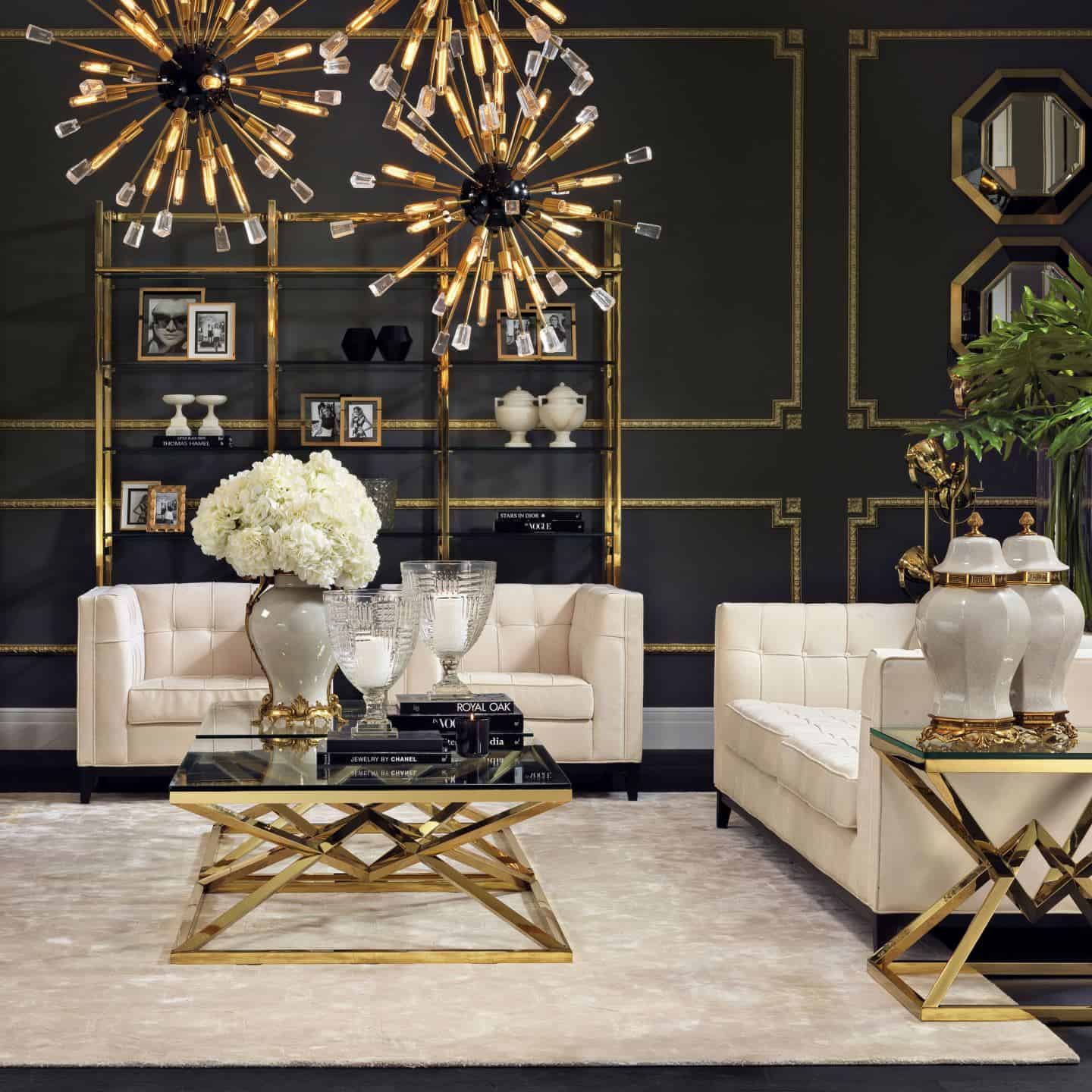Art Deco Furniture

Art deco interior – Art Deco furniture emerged as a dominant style in the 1920s and 1930s, reflecting the era’s fascination with modernity and luxury. Its distinctive characteristics include geometric shapes, bold lines, and lavish materials, creating a striking and sophisticated aesthetic.
Geometric Shapes
Art Deco furniture is characterized by its strong geometric forms, such as sharp angles, curves, and zigzags. These shapes were often inspired by architectural elements, such as skyscrapers and Art Deco buildings. The geometric designs create a sense of order and symmetry, while also adding a touch of dynamism and movement.
Art deco interiors often feature geometric patterns and bold colors, but they can also incorporate rustic elements like a barn star. These stars are traditionally made of metal and have a geometric design, making them a perfect fit for art deco style.
They can be hung on walls or used as accents on furniture, and they add a touch of warmth and charm to any space.
Bold Lines
Bold, straight lines are another key feature of Art Deco furniture. These lines can be found in the legs of chairs and tables, the frames of mirrors, and the decorative elements on furniture surfaces. The strong lines add a sense of structure and sophistication to the pieces, while also creating a sense of visual balance.
The exquisite lines and geometric shapes of Art Deco interiors evoke a sense of timeless elegance. The sleek curves and bold colors create a sophisticated ambiance, perfect for displaying seasonal accents like the vibrant home depot pumpkins. These pumpkins, with their intricate carvings and rich hues, add a touch of whimsy to the Art Deco aesthetic, while still maintaining the overall sophistication of the space.
Luxurious Materials
Art Deco furniture often features luxurious materials, such as exotic woods, marble, and leather. These materials add a touch of opulence and glamour to the pieces, reflecting the era’s fascination with wealth and excess. Wood veneers, such as rosewood and ebony, were commonly used to create intricate patterns and designs on furniture surfaces.
Iconic Pieces, Art deco interior
Some of the most iconic Art Deco furniture pieces include:
- Zigzag Chair by Gerrit Rietveld: This chair is known for its bold geometric shape and cantilevered design, which creates the illusion of floating.
- Barcelona Chair by Mies van der Rohe: This chair is a classic example of Art Deco minimalism, with its simple yet elegant lines and luxurious leather upholstery.
Contemporary Influence
Art Deco furniture continues to influence contemporary interior design, with its bold shapes and luxurious materials finding a place in modern homes. Designers often incorporate Art Deco elements into their work, such as geometric patterns, bold lines, and luxurious fabrics. The style’s enduring appeal lies in its ability to create a sense of sophistication and glamour, while also adding a touch of historical charm.
Art Deco Lighting: Art Deco Interior

Art Deco lighting embodies the distinctive characteristics of the Art Deco style, featuring geometric forms, the use of glass and metal, and the incorporation of stylized motifs. These lighting fixtures often serve as sculptural elements within an interior space, adding a touch of glamour and sophistication.
Notable Art Deco Lighting Fixtures
Some notable examples of Art Deco lighting fixtures include:
- Chandelier by Louis Majorelle: This chandelier features a geometric frame made of wrought iron, adorned with stylized leaves and flowers made of glass. Its intricate design showcases the fusion of organic and geometric elements that is characteristic of Art Deco.
- Lamp by René Lalique: This lamp is made of frosted glass and features a stylized female figure. The figure’s flowing lines and the use of light and shadow create a sense of movement and drama.
Evolution of Art Deco Lighting
Art Deco lighting has evolved over time, with contemporary interpretations often incorporating new materials and technologies. However, the core principles of geometric forms, the use of glass and metal, and the incorporation of stylized motifs remain prevalent.
Art Deco Architecture

Art Deco architecture emerged in the 1920s and 1930s, characterized by its distinctive geometric forms, luxurious materials, and ornamental details. It flourished in urban centers, leaving a lasting impact on skylines and shaping the architectural landscape of the time.
Architectural Elements
Art Deco buildings showcase a range of architectural elements that define their style:
- Geometric Facades: Art Deco facades often feature clean lines, sharp angles, and geometric patterns. Zigzags, chevrons, and stepped motifs are commonly incorporated into the design, creating a sense of dynamism and movement.
- Stepped Roofs: Stepped or terraced roofs are a hallmark of Art Deco architecture. These roofs create a distinctive silhouette, adding visual interest and depth to the building’s exterior.
- Decorative Details: Art Deco buildings are adorned with elaborate decorative elements, including geometric motifs, stylized floral patterns, and metallic accents. These details add a touch of opulence and sophistication to the overall design.
Famous Landmarks
Some notable examples of Art Deco landmarks include:
- Chrysler Building, New York City: This iconic skyscraper is renowned for its Art Deco spire, which features intricate geometric patterns and a series of setbacks that create a dynamic silhouette.
- Hoover Building, London: This Grade II listed building exemplifies Art Deco architecture with its stepped roof, geometric facade, and decorative details. It was designed by Wallis, Gilbert, and Partners and completed in 1931.
Impact and Influence
Art Deco architecture played a significant role in shaping urban landscapes during the early 20th century. Its distinctive style added a touch of glamour and modernity to cities, creating a sense of optimism and progress. It also influenced subsequent architectural styles, such as Streamline Moderne and Art Nouveau, leaving a lasting legacy on the built environment.